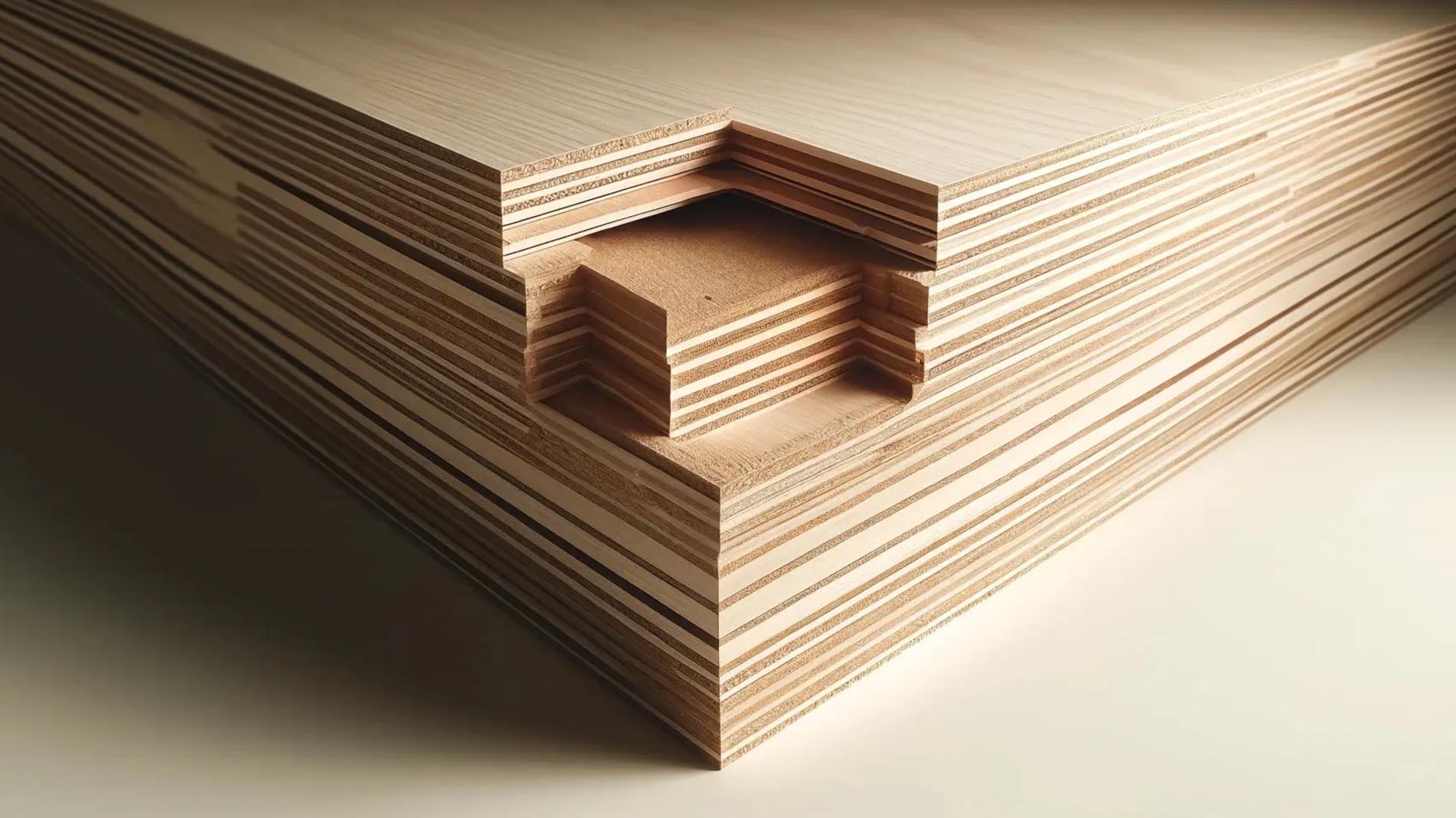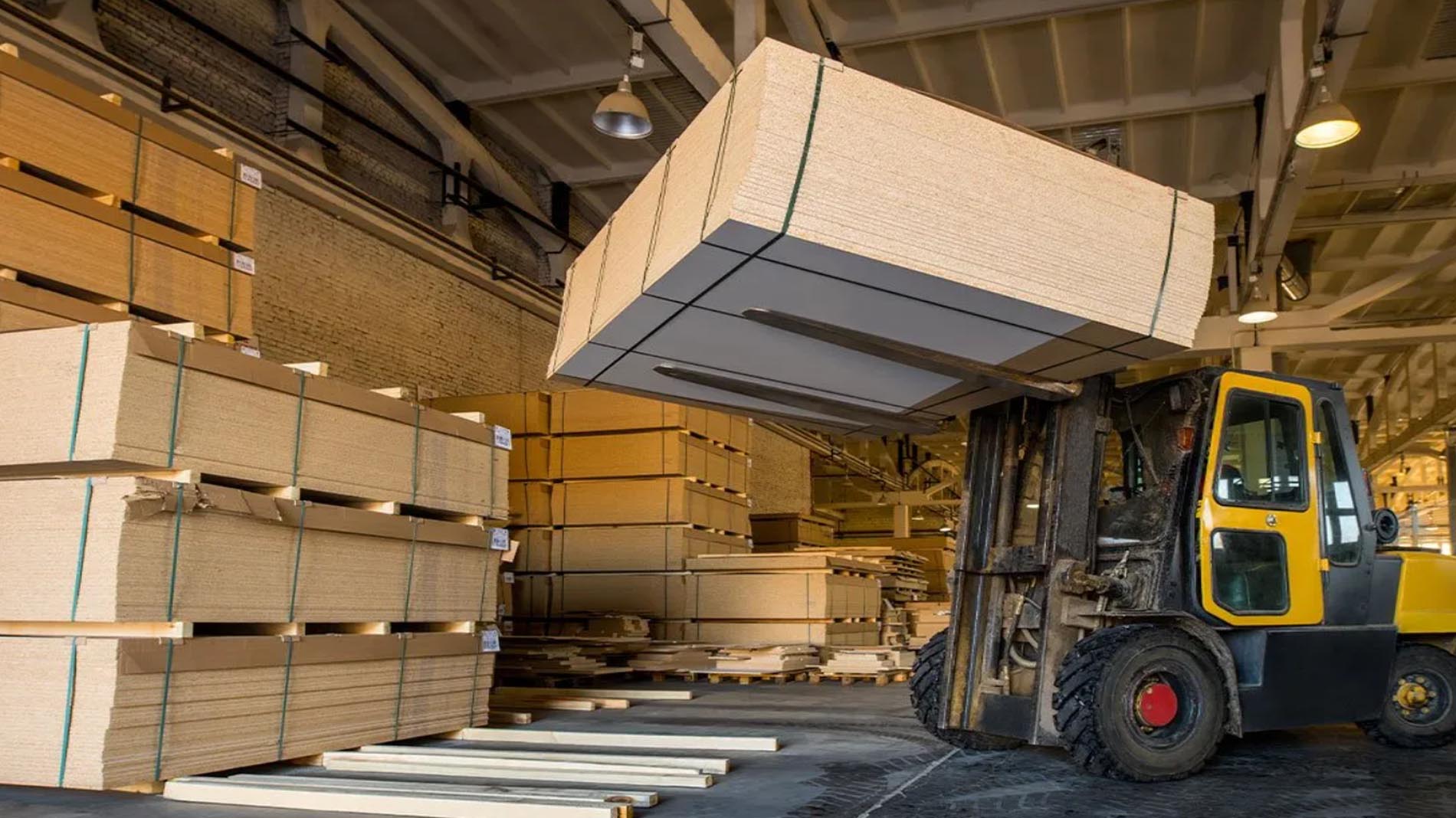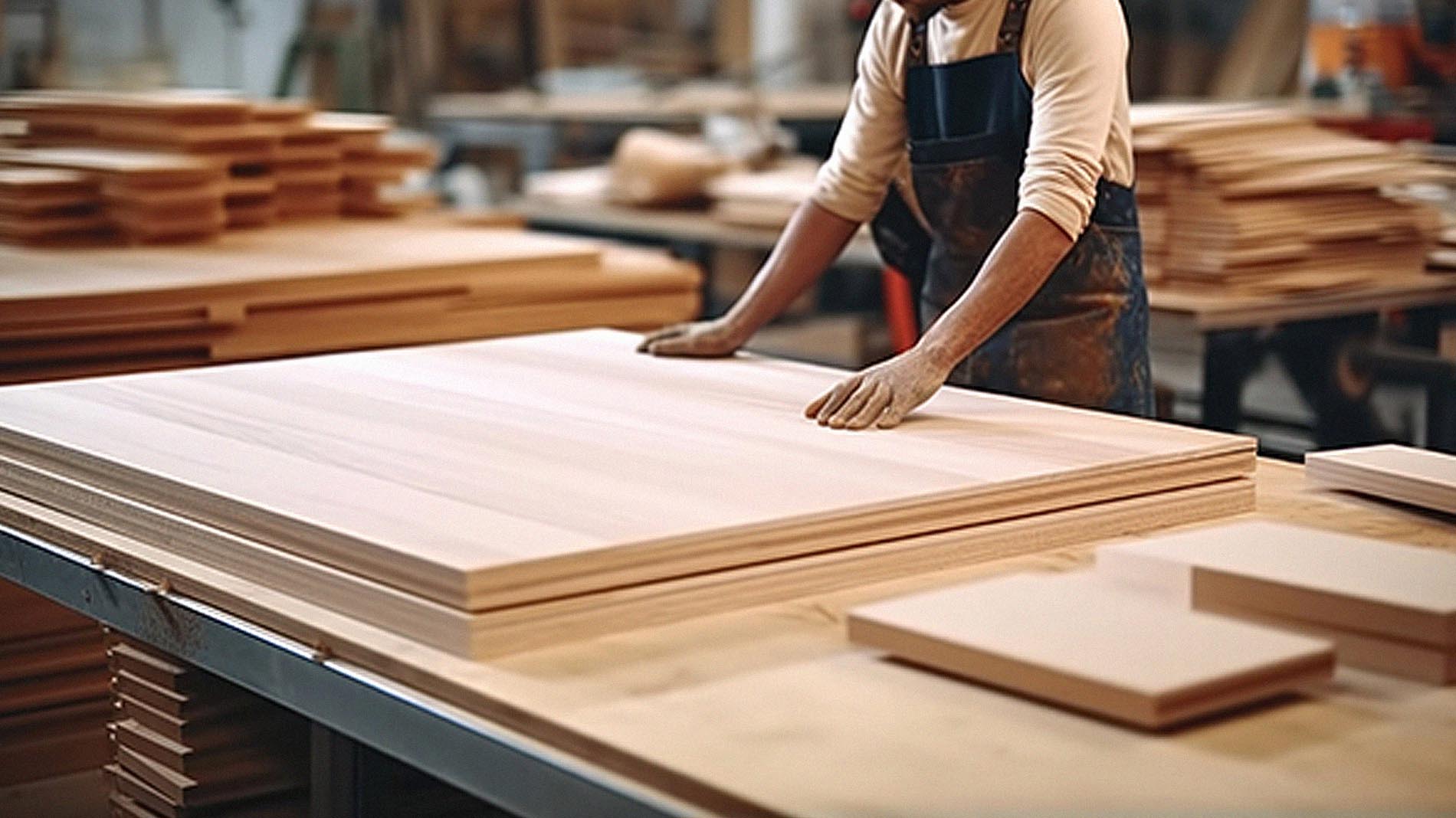Production
Plywood is one of the most widely recognized multi-purpose engineered wood-based panel products, mainly because of its strength, versatility, and affordability.
A composite wood material, plywood is made from hardwood, softwood, and other wood logs that have been sawn into veneers. These wood veneers are usually glued together, but higher-quality plywood also goes through pressing, heating, and other processes. To avoid damaging the wood fibers, one should choose the right angle before gluing the veneers.
Plywood is chosen because its surfaces are stronger than those of 2×4 logs. This prevents the plywood from expanding even when moisture is present along the grain of the board. Because of the processes it undergoes, plywood is resistant to warping, splitting, and shrinkage.
While there are many different types of plywood, the thickness of each type generally depends on how many layers it has. The most popular type of plywood is 3-ply. Plywood with 5 or more layers is the strongest.
Characteristics of Plywood
With many different types of plywood available, you can choose the one that best suits your needs. Here are some characteristics of the many varieties of plywood available:
To ensure dimensional stability, the boards are produced in odd numbers of plies, with each number representing a different thickness. Although 5 and 7 plies are also often offered, 3 plies is the minimum. A represents the highest quality plywood, while D is the lowest. The grades describe the quality and appearance of the board.
The plywood is divided by use: Exterior and Interior
Exterior Plywood
|
thickness, mm |
sq.m in pack |
sheets in pack |
sheets in sq.m |
|---|---|---|---|
| 3 | 0,907 | 130 | 143,33 |
| 4 | 0,93 | 100 | 107,5 |
| 6 | 0,907 | 65 | 71,67 |
| 8 | 0,93 | 50 | 53,75 |
| 9 | 0,921 | 44 | 47,78 |
| 10 | 0,93 | 40 | 43 |
| 12 | 0,921 | 33 | 35,83 |
| 15 | 0,907 | 26 | 28,67 |
| 18 | 0,921 | 22 | 23,89 |
| 20 | 0,93 | 20 | 21,5 |
| 21 | 0,928 | 19 | 20,48 |
| 24 | 0,893 | 16 | 17,92 |
Major applications: roofing, exterior wall sheathing, subflooring and deck framing, fencing, garden structures, play structures, outdoor furniture, decorative cladding, and any project that requires a clean finish but is exposed to moisture.
Advantages: Resistant to rot, termites, and fungi; provides good resistance to weather and moisture, Durable, aesthetically pleasing, can be customized with a variety of stains and finishes
Interior Plywood
|
thickness, mm |
sq.m in pack |
sheets in pack |
sheets in sq.m |
|---|---|---|---|
| 3 | 0,907 | 130 | 143,33 |
| 4 | 0,93 | 100 | 107,5 |
| 6 | 0,907 | 65 | 71,67 |
| 8 | 0,93 | 50 | 53,75 |
| 9 | 0,921 | 44 | 47,78 |
| 10 | 0,93 | 40 | 43 |
| 12 | 0,921 | 33 | 35,83 |
| 15 | 0,907 | 26 | 28,67 |
| 18 | 0,921 | 22 | 23,89 |
| 20 | 0,93 | 20 | 21,5 |
| 21 | 0,928 | 19 | 20,48 |
| 24 | 0,893 | 16 | 17,92 |
We care about our planet: Plywood is reusable and recyclable. Compared to solid wood, it is considered more environmentally friendly.
Major applications:
- Interior wall and ceiling linings
- Feature walls and partitions
- Back lining to exposed rafters
- Commercial interiors and shop fitouts
- Furniture and cabinets
Advantages
- Decorative real wood paneling
- Tough and impact resistant
- Strong, providing stiffness and rigidity
- Only requires standard carpentry tools
Contacts
SARL CHARMANTE PLY
TUNISIA, KM 13 GP1 BIRCHOUABA BIR BOUREGBA
+2165 179 53 90
@charmanteply
desk@charmanteply.com
CONTACT US


